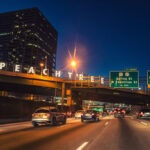Working with street lamps in a physical lighting workflow presents several unique challenges that can make achieving realistic illumination in digital environments more complex. When we consider a Street Lamp Lamp, it’s not just about the raw power of the bulb, but a combination of factors that influence how light behaves and is perceived.
One key issue arises from the specifications provided for typical light bulbs. While a bulb might be rated at 5000 lumens, this figure alone doesn’t tell the whole story. Lumens only represent the total quantity of visible light emitted by a source. For a street lamp lamp, the beam angle is equally, if not more, important. A narrow beam angle, characteristic of a spotlight, will concentrate the light intensity, while a wider beam angle, like that of a flood or rectangular light, will disperse it. This variation directly impacts the perceived brightness and coverage of the street lamp lamp.
Furthermore, the actual radiation pattern from the bulb and its fixture plays a crucial role. While candelas offer a better measure of light intensity in a specific direction, accurately representing the light distribution requires an IES profile that matches the physical lamp. Without this detailed profile, simply using lumen values for a street lamp lamp in a digital scene can lead to inaccurate results. The inverse square law also comes into play, especially with street lights. This law dictates that light intensity decreases with the square of the distance from the source. Therefore, the size and placement of your digital street lamp lamp must be carefully considered to ensure it effectively illuminates the ground area, mimicking real-world street lighting. Real street lamps are designed with specific heights to optimize light distribution, a factor that must be emulated digitally.
Another significant aspect is the difference in how we perceive light compared to digital rendering. Physically based lights operate on real-world values, but our computer screens and rendering software lack the dynamic range and white balance capabilities of the human eye. This means that even with accurate physical values, a digital street lamp lamp might initially appear different from our memory of real-world street lighting. When evaluating digital lighting, it’s helpful to imagine viewing the scene through a high-end camera with a wide dynamic range, capturing more detail in both bright and dark areas.
Exposure becomes paramount when working with physically accurate lighting units, especially for a street lamp lamp. Fine-tuning exposure is crucial to achieving a visually realistic scene. Often, a slight underexposure, around -1 EV (Exposure Value), can be appropriate to create a sense of nighttime or atmospheric depth. Additionally, the ground material’s reflectivity significantly influences the overall scene brightness. If the ground surface in your digital scene is too dark or non-reflective, it will absorb too much light from the street lamp lamp, resulting in a dimmer appearance than intended.
Emissive surfaces introduce another layer of complexity when simulating street lamp lamps. Technically, the light emitted from a street lamp lamp isn’t a uniform intensity across its surface. However, detailed measurements of luminance for emitting surfaces are scarce. Using real-world luminance values for emissive surfaces can often result in excessively bright renders due to the dynamic range issues mentioned earlier. A practical approach is to visually adjust the emissive intensity, often in conjunction with default bloom effects or even without bloom, to achieve a result that “feels right” within the overall exposure and lighting of the scene. The goal is to find a balance where the emissive element of the street lamp lamp is visible, especially during daytime scenes when the emitted light on surfaces might be less prominent. In reality, the emissive source of a street lamp lamp is typically visible even during the day if it’s switched on.
In conclusion, effectively recreating street lamp lamp lighting in digital workflows necessitates a nuanced understanding of factors beyond simple lumen values. Considering beam angles, radiation patterns, dynamic range limitations, exposure settings, and surface reflectivity are all crucial steps in achieving realistic and visually compelling digital street lighting. Focusing on accurate daytime exposure and visually calibrating emissive intensities can lead to more believable and aesthetically pleasing results when working with digital street lamp lamps.

